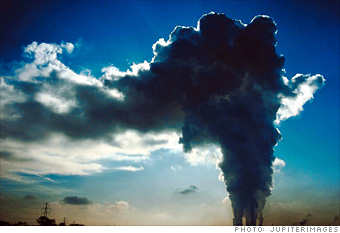How the climate bill hits your wallet
Lawmakers are set to debate a sweeping energy bill Friday. This is how it may affect you.

An 80% reduction is what most scientists say is needed to avoid the worst effects of global warming.
Putting the nation on track to meet this goal by 2050 will cost the average American household $175 a year by 2020, according to the Congressional Budget Office.
Under the plan, known as a cap-and-trade, polluters would have to pay to emit carbon dioxide into the atmosphere, something they currently do for free. Plus, the amount they can emit would decline each year (cap).
Industries would either pay for cleaner technology, or buy pollution permits in a secondary market (trade). Industries most affected include electric utilities, gasoline refiners, chemical makers, and steel and cement companies.
The huge costs in this system - over $100 billion a year - would normally be passed on directly to the consumer. But much of the money generated from the sale of these pollution permits is being returned to households and business as a series of tax credits and other allocations. These credits are what push down the annual household cost to a relatively low $175.
Consumers will mainly see this cost in the form of higher electric bills and gas prices. The impact on the Federal budget is minimal, with one analysis suggesting that it could actually increase revenues a bit.
Opponents of the measure say the costs will be far higher, while supporters say the average household will actually see an increase in spending power because they'll be using less energy.
If the bill passes the House it must then go before the Senate, which probably won't happen until the fall. Most observers say it stands a good chance of passing the House, but will have a more difficult time in the Senate.
NEXT: Tax credits
